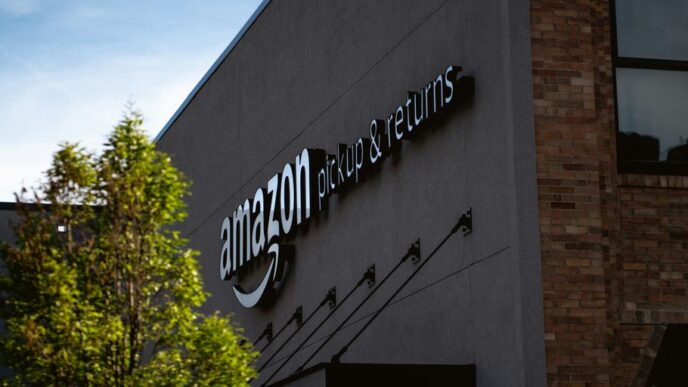The retail industry is in the midst of a seismic shift, driven by technological advancements that are reshaping how businesses operate and interact with customers. Among these advancements, Big Data and predictive analytics stand out as transformative forces. By leveraging the vast amounts of data generated every second, retailers can gain unprecedented insights into customer behavior, optimize operations, and create highly personalized experiences that cater to individual preferences. This detailed exploration will delve into the mechanisms by which Big Data and predictive analytics are revolutionizing the retail sector, offering a documentary-style narrative to uncover the profound impact on customer experiences.
Understanding Big Data in Retail
Big Data refers to the enormous volumes of data that are continuously generated from various sources, both structured (e.g., transaction records) and unstructured (e.g., social media posts). In the context of retail, Big Data encompasses:
- Customer Data: This includes purchase history, browsing behavior, social media interactions, preferences, and feedback. Every transaction and interaction leave digital footprints that provide valuable insights into customer preferences and buying patterns.
- Operational Data: This involves data related to inventory levels, supply chain logistics, sales transactions, and employee performance. Operational data helps in streamlining processes and ensuring that the right products are available at the right time.
- Market Data: This includes information on market trends, competitor activities, and demographic statistics. Market data helps retailers stay competitive by understanding broader industry movements and customer demographics.
By harnessing this data, retailers can move from reactive to proactive strategies, anticipating customer needs and market trends with greater accuracy.
The Role of Predictive Analytics
Predictive Analytics utilizes statistical algorithms and machine learning techniques to analyze historical data and predict future outcomes. In retail, predictive analytics can play several crucial roles:
- Enhancing Customer Personalization: By analyzing past behaviors and preferences, predictive models can tailor recommendations, promotions, and services to individual customers.
- Optimizing Inventory Management: Predictive analytics can forecast demand for products, ensuring optimal stock levels and reducing the costs associated with overstock and stockouts.
- Improving Supply Chain Efficiency: By anticipating disruptions and demand fluctuations, predictive models can help optimize logistics and supply chain strategies.
- Boosting Sales and Marketing: Predictive analytics can identify potential high-value customers, optimize pricing strategies, and enhance the effectiveness of targeted marketing campaigns.
Transforming Customer Experiences with Predictive Analytics
The integration of Big Data and predictive analytics into retail operations has profound implications for customer experiences. Let’s explore some of the key areas where these technologies are making a significant impact.
1) Personalized Shopping Experiences
Recommendation Engines: One of the most visible applications of predictive analytics in retail is the recommendation engine. These engines analyze a customer’s purchase history, browsing patterns, and even social media activity to suggest products they are likely to be interested in. For example, Amazon’s recommendation system accounts for a significant portion of its sales, demonstrating the power of personalized recommendations.
Dynamic Pricing: Retailers can use predictive models to adjust prices in real-time based on various factors such as demand, competitor pricing, and customer profiles. This ensures that customers are offered competitive prices, enhancing their shopping experience and increasing the likelihood of conversion.
Customized Promotions: By analyzing customer data, retailers can create personalized promotions and discounts. For instance, a loyal customer might receive a special discount on their favorite products during their birthday month, making them feel valued and appreciated.
2) Proactive Customer Service
Predictive Maintenance: For products that require maintenance, such as electronics or vehicles, predictive analytics can anticipate when a customer might experience issues and proactively offer solutions. This preemptive approach enhances customer satisfaction by addressing problems before they escalate.
Customer Support: Predictive analytics can help forecast common customer inquiries and prepare support teams accordingly. By analyzing patterns in customer queries, retailers can ensure that their support staff is equipped to handle the most likely issues efficiently.
3) Optimized Marketing Campaigns
Segmentation and Targeting: Predictive models can analyze customer data to segment the audience into distinct groups based on their behaviors and preferences. This allows retailers to design highly targeted marketing campaigns that resonate with specific customer segments, improving engagement and conversion rates.
Customer Churn Prediction: By identifying patterns that indicate a customer is likely to stop using a service or shopping at a store, retailers can implement targeted retention strategies. This might include personalized offers, loyalty programs, or direct outreach to re-engage at-risk customers.
4) Efficient Inventory and Supply Chain Management
Demand Forecasting: Predictive analytics can accurately forecast product demand, helping retailers maintain optimal inventory levels. This reduces the costs associated with excess inventory and minimizes the risk of stockouts, ensuring customers can always find what they need.
Supply Chain Optimization: By predicting potential disruptions in the supply chain, such as delays or shortages, retailers can adjust their procurement and logistics strategies in advance. This proactive approach helps maintain smooth operations and ensures timely product availability.
Case Studies: Real-World Applications
To illustrate the transformative impact of Big Data and predictive analytics in retail, let’s look at some real-world examples:
- Amazon: Amazon is a pioneer in the use of Big Data and predictive analytics. Its recommendation engine, which suggests products based on a customer’s past purchases and browsing history, is a key driver of its success. Amazon’s ability to personalize the shopping experience at such a granular level significantly boosts customer satisfaction and sales.
- Walmart: Walmart employs predictive analytics to optimize its inventory management. By analyzing sales data, weather patterns, and local events, Walmart can accurately forecast demand for products. This ensures that stores are well-stocked with items that customers are likely to purchase, improving customer satisfaction and reducing operational costs.
- Sephora: Sephora leverages customer data to deliver personalized beauty recommendations. Through its app and in-store technology, Sephora analyzes customer preferences, skin type, and past purchases to offer tailored product suggestions. This personalized approach enhances the customer experience and fosters loyalty.
- Netflix: While not a traditional retailer, Netflix’s use of predictive analytics to recommend shows and movies demonstrates the power of personalization. By analyzing viewing habits, Netflix can suggest content that aligns with a user’s preferences, keeping them engaged and subscribed to the service.
Challenges and Considerations
While the benefits of harnessing Big Data and predictive analytics in retail are clear, there are several challenges and considerations that businesses must address:
- Data Privacy and Security: As retailers collect more data on their customers, ensuring that this data is handled responsibly and securely is paramount. Compliance with data protection regulations, such as GDPR, is essential to maintain customer trust and avoid legal repercussions.
- Data Quality: The accuracy and reliability of predictive models depend on the quality of the data being analyzed. Retailers must invest in data cleaning and validation processes to ensure their datasets are comprehensive and accurate.
- Integration: Integrating predictive analytics into existing systems and workflows can be complex. Retailers need to ensure that their IT infrastructure can support the sophisticated algorithms and data processing required for predictive analytics.
- Skilled Personnel: Developing and maintaining predictive models requires skilled data scientists and analysts. Retailers must invest in hiring and retaining talent capable of leveraging Big Data and predictive analytics effectively.
- Ethical Considerations: The use of predictive analytics must be guided by ethical principles. Retailers should avoid invasive data practices and ensure that their use of customer data is transparent and fair.
Future Trends in Predictive Analytics for Retail
The future of predictive analytics in retail is bright, with several trends poised to enhance its impact even further:
- AI and Machine Learning: Advances in artificial intelligence and machine learning will enable even more sophisticated predictive models. These technologies can analyze larger datasets more quickly and accurately, providing deeper insights into customer behavior and market trends.
- Real-time Analytics: The demand for real-time data processing and analytics is growing. Retailers will increasingly leverage technologies that provide immediate insights and enable instant decision-making, further enhancing customer experiences.
- Omnichannel Integration: Predictive analytics will be increasingly applied across all customer touchpoints, both online and offline. This integration will provide a seamless and cohesive customer experience, ensuring that customers receive personalized interactions regardless of how they engage with the retailer.
- Voice and Visual Search: As voice-activated assistants and visual search technologies become more prevalent, predictive analytics will evolve to include these new data sources. Retailers will be able to predict customer needs and preferences based on voice commands and image searches, offering even more personalized experiences.
- Sustainability and Ethical Consumption: Predictive analytics will also play a role in promoting sustainability. By predicting demand more accurately, retailers can reduce waste and improve their environmental footprint. Additionally, analytics can help identify and promote ethically sourced products, catering to the growing number of consumers who prioritize sustainability.
Conclusion
The integration of Big Data and predictive analytics into the retail sector is not just a technological advancement but a paradigm shift. By harnessing the power of these technologies, retailers can transform customer experiences, making them more personalized, efficient, and satisfying. From personalized recommendations and dynamic pricing to proactive customer service and optimized supply chains, predictive analytics offers a myriad of benefits that can drive business success.
However, the journey towards fully leveraging Big Data and predictive analytics is not without challenges. Retailers must navigate issues related to data privacy, quality, and integration while ensuring they have the necessary talent and ethical guidelines in place. As technology continues to evolve, those who can effectively harness these tools will be well-positioned to lead the retail industry into a future where customer experiences are not just enhanced but revolutionized.












